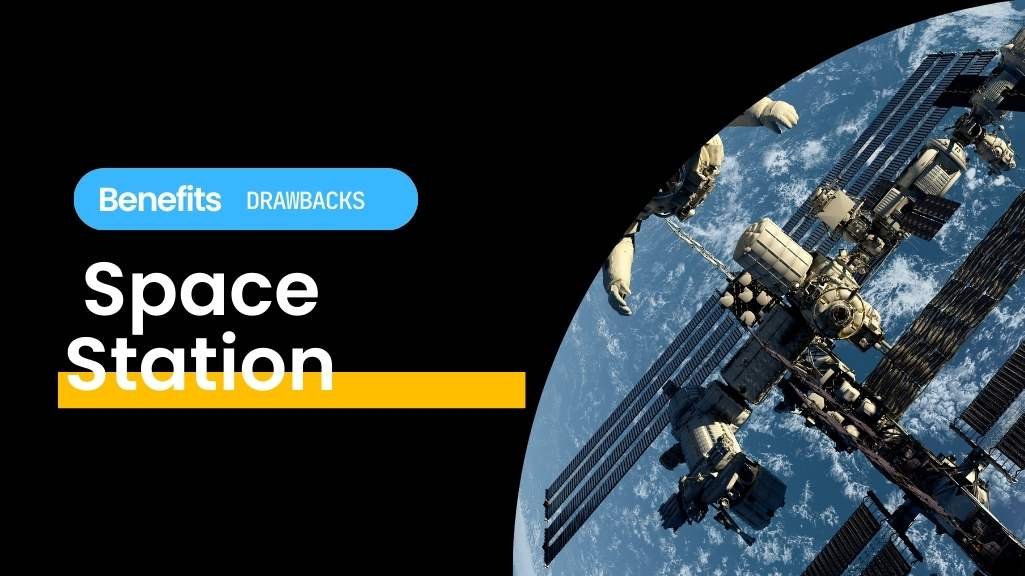The Benefits and Drawbacks of having a Space Station
Steffan Addison
. 3 min read
A space station, an artificial structure placed in orbit and having the pressurized enclosure, power, supplies, and environmental systems necessary to support human habitation for extended periods, requires advanced programming to operate efficiently and effectively. The configuration of a space station determines the range of activities that can be conducted there as a base of operations, and programming plays a vital role in enabling these activities. In summary, programming is an integral part of operating a space station, enabling a wide range of activities and scientific research to be conducted in the unique environment of space.

Salyut, the World's First Space Station
The Salyut 1 space station was launched into orbit by the Soviet Union on April 19, 1971. It was the first space station ever built. The crew of Georgi T. Dobrovolski, Vladislav N. Volkov, and Viktor I. Patsayev successfully completed a record-setting 24-day mission aboard the space station Salyut, which was designed for a 6-month operational lifetime while in orbit. The mission came to a tragic end when the crew of their Soyuz 11 spacecraft perished as a result of the sudden depressurization of their spacecraft shortly before it reentered the atmosphere of the Earth.
Evolution of Space Stations: From Salyut to the International Space Station
Over the course of the subsequent decades, Soviet and later Russian engineers made continuous improvements to the initial Salyut design. As a result, they were able to launch increasingly capable generations of space stations in the Salyut series as well as the Base Block of the Mir station. The Zvezda Service Module, which is part of the Russian segment of the International Space Station, can trace its lineage all the way back to the world's first space station, which was built fifty years ago.
Exploring the Benefits and Advancements of the International Space Station
Additionally, the International Space Station serves as a hub that drives forward developments in the field of physical medicine. Researchers on Earth were able to establish that certain bacteria, such as Salmonella, can become more dangerous when subjected to the conditions of space travel.
The International Space Station serves as a platform for scientific investigation:
Researchers are able to achieve a deeper level of comprehension regarding the characteristics of particular cells, proteins, and tissues when they are removed from the influence of gravity. The efficacy of treatments designed to combat diseases such as cancer, cardiovascular disease, and Alzheimer's disease can now be evaluated more precisely.
Astronauts themselves are the subjects of scientific investigation:
A number of other instruments aboard the space station monitor the distribution of carbon dioxide on Earth. They provided fascinating data during the early stages of COVID-19, which coincided with a period of time when emissions on the planet dropped significantly.
Eye-tracking technology:
The Eye Tracking Device, which was initially designed for use in an experiment involving microgravity, has since found widespread application in the field of laser surgery. A further benefit of eye-tracking technology is that it assists disabled people who have restricted mobility and communication.
Contributing to the efforts of water purification:
The improved water filtration and purification systems that are being developed for the ISS can be of use in areas where there is a scarcity of water. With the assistance of the International Space Station's Water Recovery System (WRS) and Oxygen Generating System, a village in Iraq that was in danger of being deserted due to a lack of access to clean water was prevented from being abandoned.
Cooperation in a Spirit of Composure:
According to Julie Robinson, who serves as the chief scientist for the International Space Station (ISS), the station is the result of an unprecedented level of peaceful cooperation between 82 nations, who worked together to develop technology, conduct launches, collect data, and provide training.
Earth Observation:
Now that construction has been finished, the station is well on its way to becoming a one-of-a-kind platform for Earth observation. Exhaust produced by launch vehicles traveling to and from the station can have a negative impact on sensitive sensors.
Negative Aspects of the Space Station
1. The possibility of micrometeoroid and orbital debris (MMOD) penetrating the critical hardware of the Station, such as the pressure wall, is one of the most significant threats to the International Space Station (ISS).
2. The International Space Station has the potential to accidentally collide with visiting vehicles, other Station Remote Manipulator Systems (RMSs), or robotic arms, which could result in the loss of life among crewmembers and damage to the ISS.
3. There is also a risk of fires breaking out at the Station, and these fires could start in a variety of locations throughout the place of business.
4. The International Space Station is also confronted with a significant challenge in the form of the risk of hazardous materials leaking inside the facility.
5. The possibility of catastrophic system failures due to a variety of reasons, such as fire and other related dangers, is yet another significant cause for concern.
More Stories from
Connected Cosmos: Embracing the Future of Space Exploration with Video Chat
Discover the potential for human colonization of other planets, breakthrough propulsion systems, and the expansion of our knowledge of the universe through space-based astronomy.
Exploring the Final Frontier: A Glimpse into the World of Space Research
From probing distant galaxies with space telescopes to charting the potential for human life on other planets, this article provides a glimpse into the evolving field of space research.
Chandrayaan-3: India's Ambitious Lunar Mission for Scientific Exploration
Chandrayaan-3, India's third lunar mission led by ISRO, aims to overcome past challenges and demonstrate soft landing capabilities on the Moon.
The Remarkable Lives of Katherine Johnson: From Child Prodigy to NASA Trailblazer
This article highlights the life and achievements of Katherine Johnson, a trailblazing mathematician







.png?width=40&aspect_ratio=1:1)


